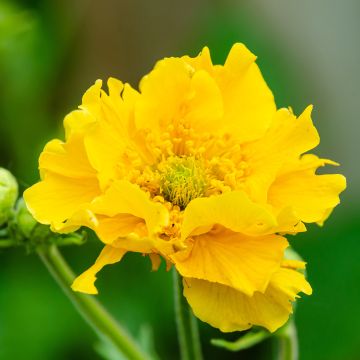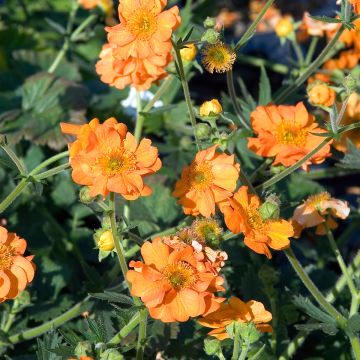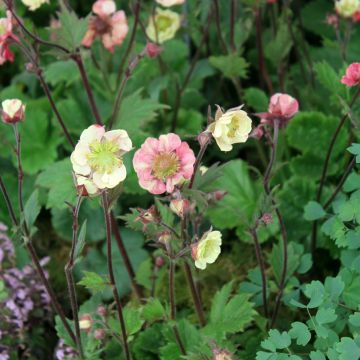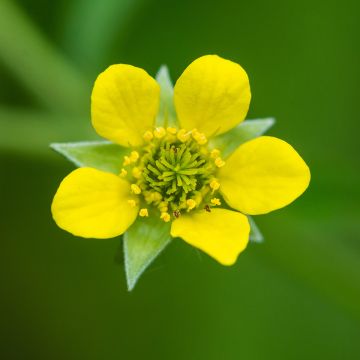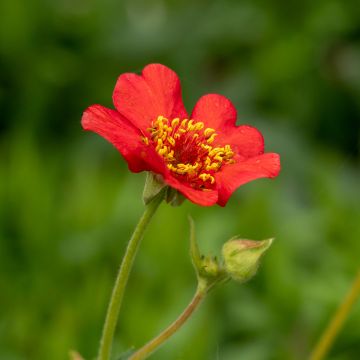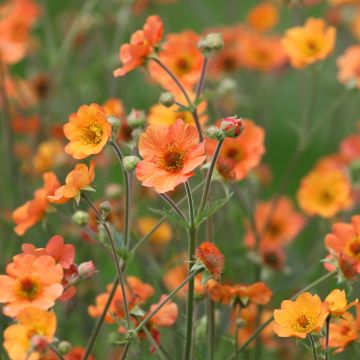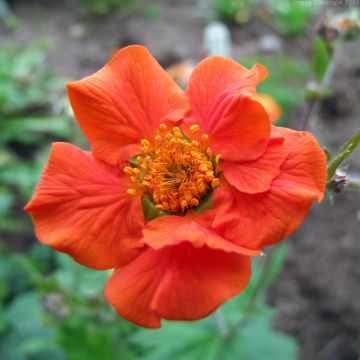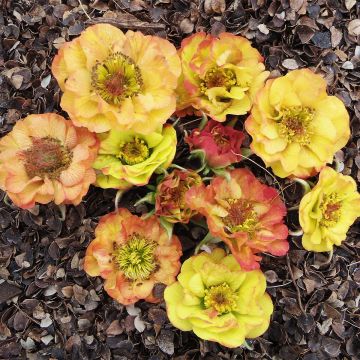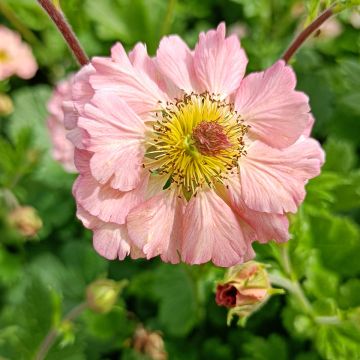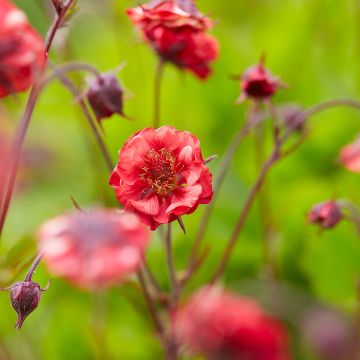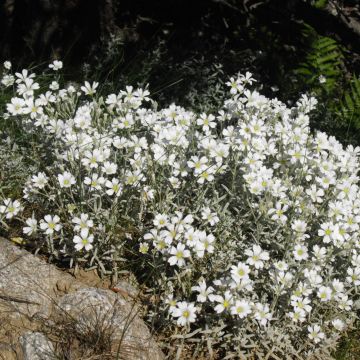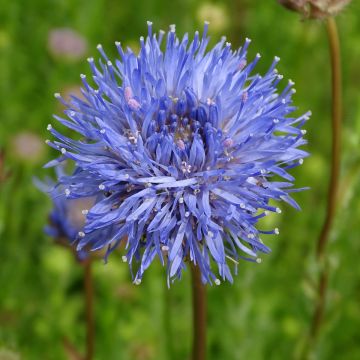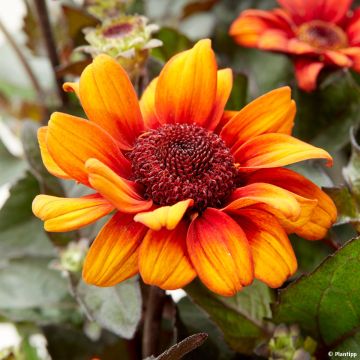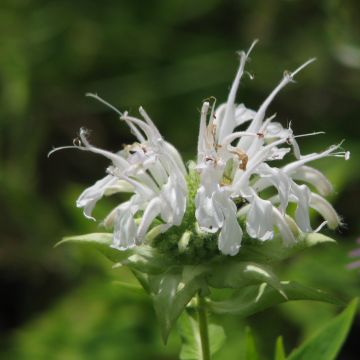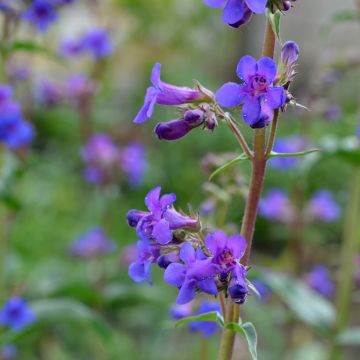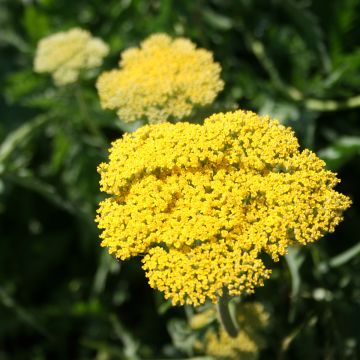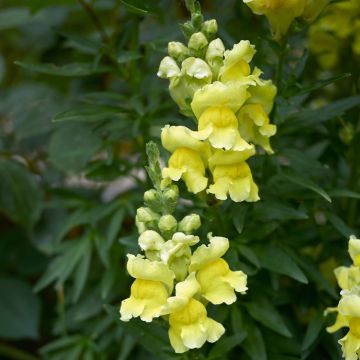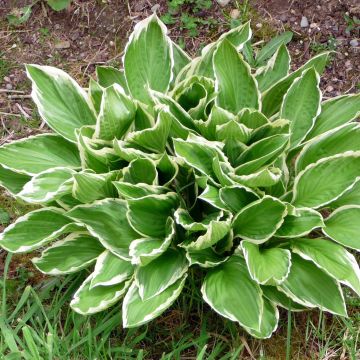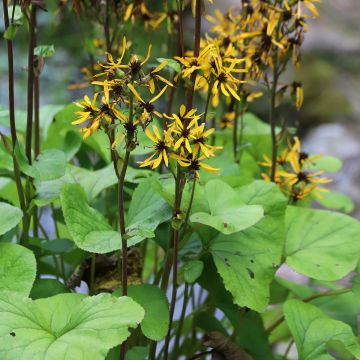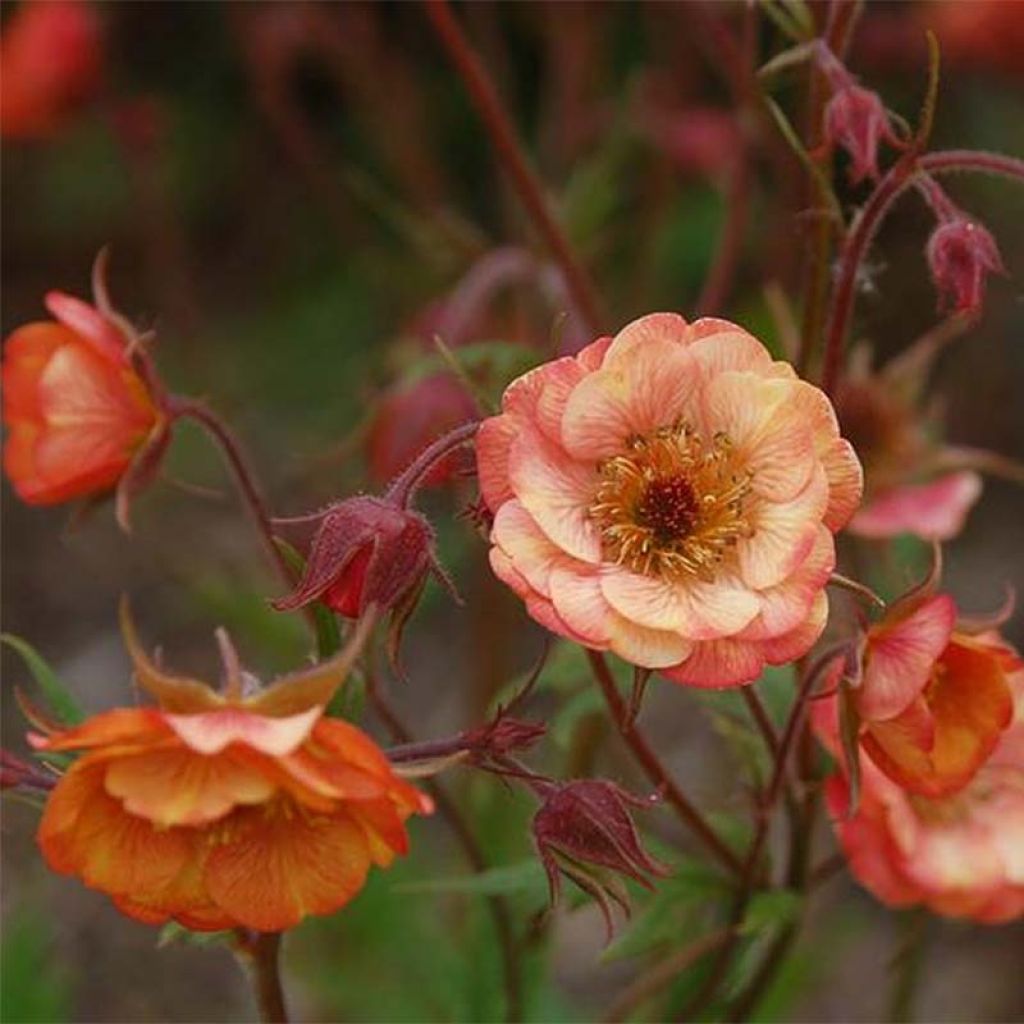

Geum coccineum Cocktail Wet Kiss
Geum coccineum Cocktail Wet Kiss
Geum coccineum Cocktail Wet Kiss
Avens
This item cannot be shipped to the selected country
Delivery charge from €5.90
More information
Schedule delivery date,
and select date in basket
This plant carries a 12 months recovery warranty
More information
We guarantee the quality of our plants for a full growing cycle, and will replace at our expense any plant that fails to recover under normal climatic and planting conditions.
From €5.90 for pickup delivery and €6.90 for home delivery
Express home delivery from €8.90.

Does this plant fit my garden?
Set up your Plantfit profile →
Description
Geum coccineum 'Wet Kiss' is a recent creation from the lovely 'Cocktail' series, developed for its semi-double, diaphanous flowers with fresh colours on sturdy and floriferous plants from spring to summer. The crepe-like semi-double to single flower of 'Wet Kiss' gradually changes from pink-red to orange-pink and then to pale orange, with the outer corolla retaining a more carmine hue, in a magnificent gradient of colours. It seems to float, among its twin sisters, above a velvety tuft of bright green foliage. Geum used to be found in all flower gardens. They are once again making their way into our flower beds and patios. Plant them in the sun, in moist, well-drained, and fertile soil.
Geum are hardy herbaceous perennials from the Rosaceae family. They are native to temperate or colder regions of the northern and southern hemispheres. Geum 'Wet Kiss' is a recent horticultural hybrid. This perennial plant forms a basal tuft of upright, semi-evergreen, bright green, rounded and lobed, finely velvety leaves, measuring 10 to 15cm (4 to 6in) long. In May-June, the plant will produce up to 100 flowers for 3 to 4 weeks. They bloom in cymes, on slender, branching, Bordeaux red stems, loosely erect above the foliage. Each flower measures about 3cm (1in) in diameter and consists of slightly translucent petals, animated with visible veins, surrounding a large heart of prominent yellow stamens. This variety reaches about 45cm (18in) in height when flowering, with a width of about 40cm (16in). Like many long-flowering perennials, this avens is not very long-lived, so it is advisable to divide it every three years to keep it in the garden for longer.
Hardy and very floriferous, it is an easy, accommodating plant. It appreciates sunny or partially shaded situations and grows in ordinary, moist but well-drained soil. To fully enjoy its magnificent flowering, plant 'Wet Kiss' on the edges of flower beds, mixed borders, rockeries, or even in pots. Its flower spikes will make beautiful bouquets. It requires some space to grow well, so make sure to leave room around its base. It will blend beautifully with other spring or summer flowering perennials. Its pastel colouring goes well with the blue of delphiniums, perennial flax, and speedwells. You can create sublime scenes with vibrant colours by mixing several varieties of avens together. In the sun, it will perfectly complement daylilies, rudbeckias, scabiosa, bush carnations, and perennial geraniums.
Report an error about the product description
Geum coccineum Cocktail Wet Kiss in pictures
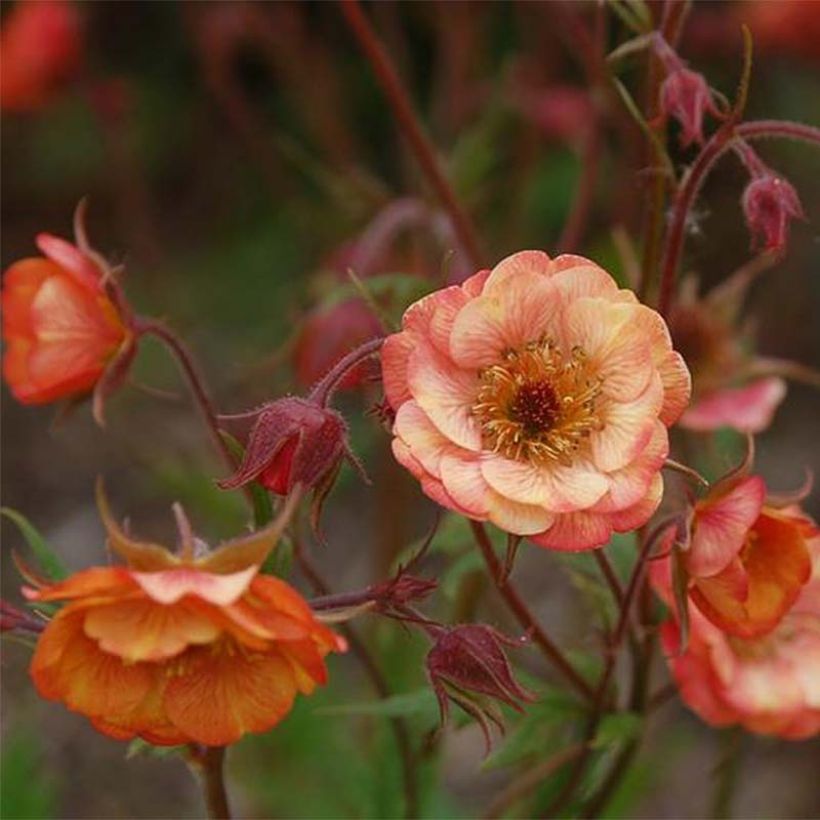

Flowering
Foliage
Plant habit
Botanical data
Geum
coccineum
Cocktail Wet Kiss
Rosaceae
Avens
Cultivar or hybrid
Other Geum - Avens
Planting and care
Geum 'Wet Kiss', hardy to at least -15°C (5°F), appreciates a sunny or semi-shaded, open location, and normal to rich, light, moist, and well-drained soil. It does not tolerate winter humidity. It will not withstand waterlogged soils in winter. They also do not tolerate dry soils in summer.
Planting can be done in spring or autumn. Be sure to regularly remove faded flowers to encourage the emergence of new flower buds and ensure continuous flowering. Due to its relatively short lifespan, divide the clumps every 3 or 4 years, in spring or autumn. Regular organic fertilisation is beneficial.
Highly resistant to diseases, it is susceptible to sawfly larvae attacks, which can damage the foliage. Excessive drought can also make it susceptible to powdery mildew.
Planting period
Intended location
Care
-
, onOrder confirmed
Reply from on Promesse de fleurs
Summer flowering perennials
Haven't found what you were looking for?
Hardiness is the lowest winter temperature a plant can endure without suffering serious damage or even dying. However, hardiness is affected by location (a sheltered area, such as a patio), protection (winter cover) and soil type (hardiness is improved by well-drained soil).

Photo Sharing Terms & Conditions
In order to encourage gardeners to interact and share their experiences, Promesse de fleurs offers various media enabling content to be uploaded onto its Site - in particular via the ‘Photo sharing’ module.
The User agrees to refrain from:
- Posting any content that is illegal, prejudicial, insulting, racist, inciteful to hatred, revisionist, contrary to public decency, that infringes on privacy or on the privacy rights of third parties, in particular the publicity rights of persons and goods, intellectual property rights, or the right to privacy.
- Submitting content on behalf of a third party;
- Impersonate the identity of a third party and/or publish any personal information about a third party;
In general, the User undertakes to refrain from any unethical behaviour.
All Content (in particular text, comments, files, images, photos, videos, creative works, etc.), which may be subject to property or intellectual property rights, image or other private rights, shall remain the property of the User, subject to the limited rights granted by the terms of the licence granted by Promesse de fleurs as stated below. Users are at liberty to publish or not to publish such Content on the Site, notably via the ‘Photo Sharing’ facility, and accept that this Content shall be made public and freely accessible, notably on the Internet.
Users further acknowledge, undertake to have ,and guarantee that they hold all necessary rights and permissions to publish such material on the Site, in particular with regard to the legislation in force pertaining to any privacy, property, intellectual property, image, or contractual rights, or rights of any other nature. By publishing such Content on the Site, Users acknowledge accepting full liability as publishers of the Content within the meaning of the law, and grant Promesse de fleurs, free of charge, an inclusive, worldwide licence for the said Content for the entire duration of its publication, including all reproduction, representation, up/downloading, displaying, performing, transmission, and storage rights.
Users also grant permission for their name to be linked to the Content and accept that this link may not always be made available.
By engaging in posting material, Users consent to their Content becoming automatically accessible on the Internet, in particular on other sites and/or blogs and/or web pages of the Promesse de fleurs site, including in particular social pages and the Promesse de fleurs catalogue.
Users may secure the removal of entrusted content free of charge by issuing a simple request via our contact form.
The flowering period indicated on our website applies to countries and regions located in USDA zone 8 (France, the United Kingdom, Ireland, the Netherlands, etc.)
It will vary according to where you live:
- In zones 9 to 10 (Italy, Spain, Greece, etc.), flowering will occur about 2 to 4 weeks earlier.
- In zones 6 to 7 (Germany, Poland, Slovenia, and lower mountainous regions), flowering will be delayed by 2 to 3 weeks.
- In zone 5 (Central Europe, Scandinavia), blooming will be delayed by 3 to 5 weeks.
In temperate climates, pruning of spring-flowering shrubs (forsythia, spireas, etc.) should be done just after flowering.
Pruning of summer-flowering shrubs (Indian Lilac, Perovskia, etc.) can be done in winter or spring.
In cold regions as well as with frost-sensitive plants, avoid pruning too early when severe frosts may still occur.
The planting period indicated on our website applies to countries and regions located in USDA zone 8 (France, United Kingdom, Ireland, Netherlands).
It will vary according to where you live:
- In Mediterranean zones (Marseille, Madrid, Milan, etc.), autumn and winter are the best planting periods.
- In continental zones (Strasbourg, Munich, Vienna, etc.), delay planting by 2 to 3 weeks in spring and bring it forward by 2 to 4 weeks in autumn.
- In mountainous regions (the Alps, Pyrenees, Carpathians, etc.), it is best to plant in late spring (May-June) or late summer (August-September).
The harvesting period indicated on our website applies to countries and regions in USDA zone 8 (France, England, Ireland, the Netherlands).
In colder areas (Scandinavia, Poland, Austria...) fruit and vegetable harvests are likely to be delayed by 3-4 weeks.
In warmer areas (Italy, Spain, Greece, etc.), harvesting will probably take place earlier, depending on weather conditions.
The sowing periods indicated on our website apply to countries and regions within USDA Zone 8 (France, UK, Ireland, Netherlands).
In colder areas (Scandinavia, Poland, Austria...), delay any outdoor sowing by 3-4 weeks, or sow under glass.
In warmer climes (Italy, Spain, Greece, etc.), bring outdoor sowing forward by a few weeks.

































